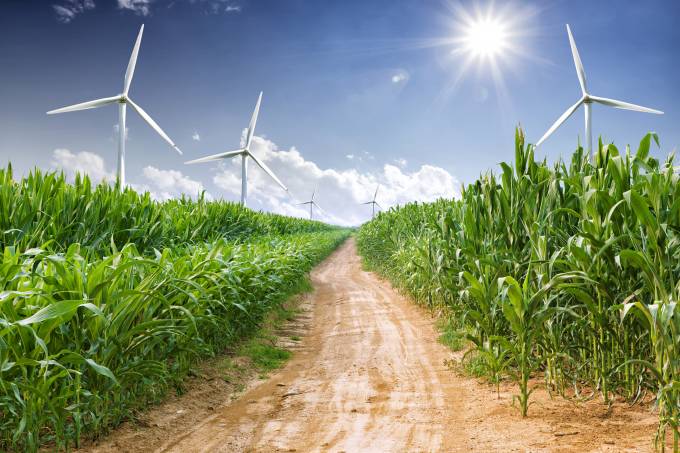Reducing the fertilizer industry's carbon footprint
By Nikolay Ketov, Public Relations Officer at Stamicarbon
In the context of global attention to reducing the industrial carbon footprint, the process industry is facing a new set of challenges and discovering a number of new opportunities. Stamicarbon is continuously developing its portfolio to offer sustainable technologies to its customers in the fertilizer industry and beyond. Fertilizerdaily.com spoke to our Vice President of Licensing, Stephen Zwart, to explore how Stamicarbon is navigating these changes and advancing sustainable technology in the fertilizer industry.
FD: Stephen, from your perspective as a head of licensing at a nitrogen technology company, what are the current technological trends and developments in the industry?
SZ: Speaking of trends, as a process licensing company that bridges innovations with business, we are driven by the industry’s constant pursuit of efficiency across the entire value chain, from feedstock to fertilizer application. However, today, this quest for efficiency is driven not only by business imperatives but increasingly by the industry’s environmental impact and evolving legislation. In recent years, heightened environmental concerns have driven a burst of activity in areas previously recognized but not actively pursued.
R&D plays a crucial role in our business model as we strive to pioneer sustainable technology rather than merely capitalizing on processes that have been established. Advances in technology enable us to minimize energy consumption, carbon emissions, and chances of over-application of fertilizers in agriculture.
FD: Could you talk more about how to address these environmental challenges?
SZ: Previously, technological advancements in the fertilizer sector primarily focused on reducing plant owners’ cost of ownership by optimizing energy efficiency and increasing single-line production capacity for economy of scale. Now, more objectives have become relevant as the industry is increasingly prioritizing sustainable production, shorter supply chains, and the use of fertilizers that minimize environmental impact. Fertilizer production and usage are now subject to heightened attention due to environmental concerns, highlighting the need for sustainable practices.
The global rise in systems and initiatives for regulating emissions is a response to the collective ambition to meet the climate objectives outlined in the Paris Agreement. In the European Union and various other global regions, Emission Trading Systems (ETS) have been established to control the volume of CO2 and other greenhouse gases (GHGs) that companies emit.
Thanks to this attention, coupled with rising energy prices, we are already observing the positive outcomes of the industry’s efforts, including our contribution towards enhancing efficiency and reducing emissions and energy consumption. Overall, the global fertilizer industry is increasingly focusing on sustainable growth strategies.

However, since the fertilizer industry primarily relies traditionally and still largely on fossil fuels, there remains considerable scope for improvement in the production and use of fertilizers. We are committed to meeting this request by providing the industry with the most efficient and sustainable technology available, aiming to enable the world to feed itself sustainably.
FD: Can you provide an example of fertilizer technology that can significantly reduce emissions while remaining profitable in the current environment?
SZ: Addressing the efficiency gap in urea production is one of our priorities as a technology company. To tackle the considerable carbon intensity associated with urea production, Stamicarbon has developed the Ultra-Low Energy design. Through this innovative design in urea production technology, we’ve managed to cut energy consumption by up to 40%. This represents a substantial decrease in the plant’s carbon footprint. While there is still carbon emission left, we have significantly reduced it. With three Ultra-Low Energy plants already operational and six more at various stages of design and construction, we can see how our work substantially contributes to reducing the industry’s carbon footprint.

Moreover, we offer solutions, materials, and equipment that help to improve the energy efficiency, economy, and lifetime of existing plants. Importantly, our developments are not only applicable to new (grassroots) projects but are also instrumental in boosting the energy efficiency of existing facilities.
FD: Ammonia has gained significant attention outside of the fertilizer industry in recent years. Could you share insights into how your company is involved in advancing this process and any notable projects?
SZ: Traditionally, ammonia production has largely been linked to fertilizer production. With the urgent need to address climate change and reduce greenhouse gas emissions originating from using fossil fuels, green ammonia, produced from carbon-free inputs, emerges as a viable alternative feedstock.
Moreover, its carbon-free nature and high energy density have revealed ammonia’s potential as an energy vector, sparking interest in the energy sector, shipping industry, and other hard-to-abate sectors. With a well-established infrastructure in place, ammonia’s role is about to extend beyond traditional uses.
Given the evolving energy landscape, the demand for ammonia could significantly increase, potentially multiplying from current levels. This anticipated growth in demand underscores ammonia’s rising importance in energy and presents an intriguing avenue for companies, like traditional fertilizer producers and ourselves, to explore new markets and applications for ammonia.
Stamicarbon is actively seeking opportunities in the energy sector, mainly through the use of renewable inputs for ammonia production. We allocate a significant portion of our earnings to R&D, aiming to make the energy transition happen with the development of innovative technology concepts.

A notable example of our recent technological advancements is our modular medium-scale green ammonia concept, known as Stami Green Ammonia. This approach enables ammonia production using green electricity in the most efficient, cost-effective, and sustainable manner. We launched this concept in 2021 and already see it being featured in several projects. One recent example is the Meadowlark project in Nebraska, USA. This project represents a fully integrated green fertilizer plant that will supply fertilizers for the local farmers while utilizing waste CO2.
